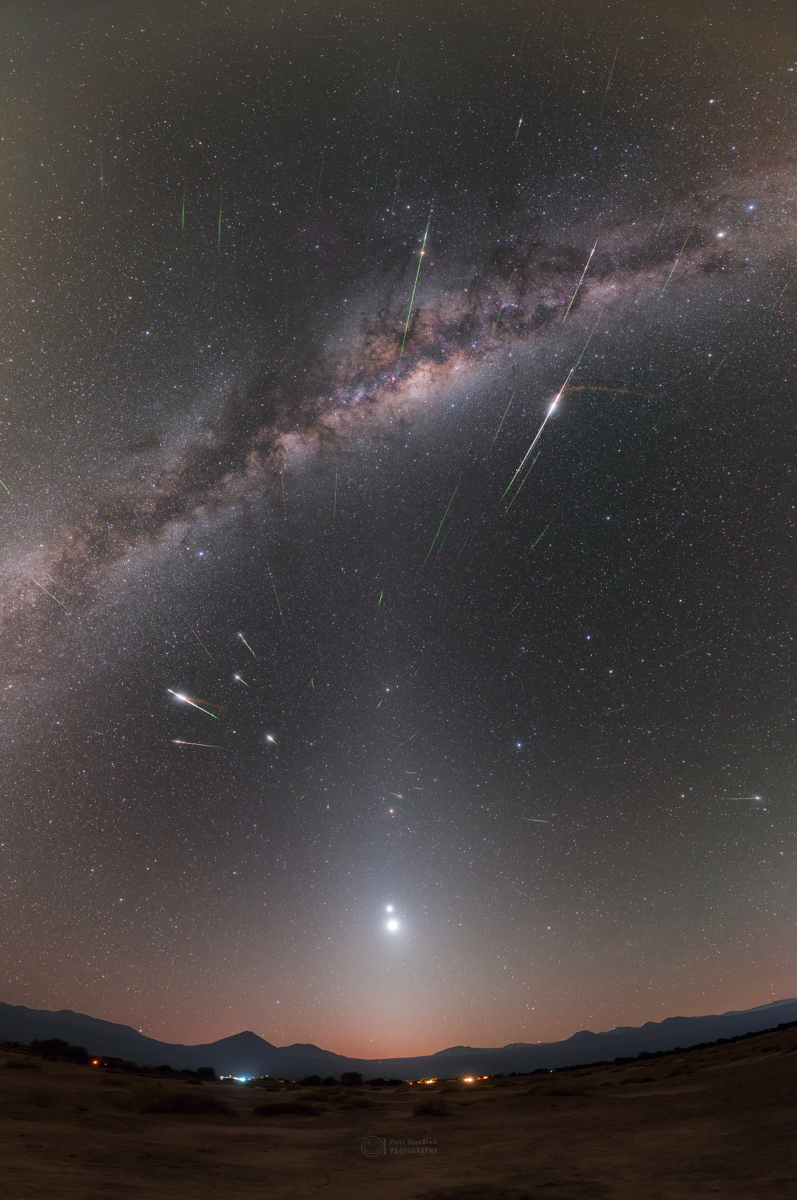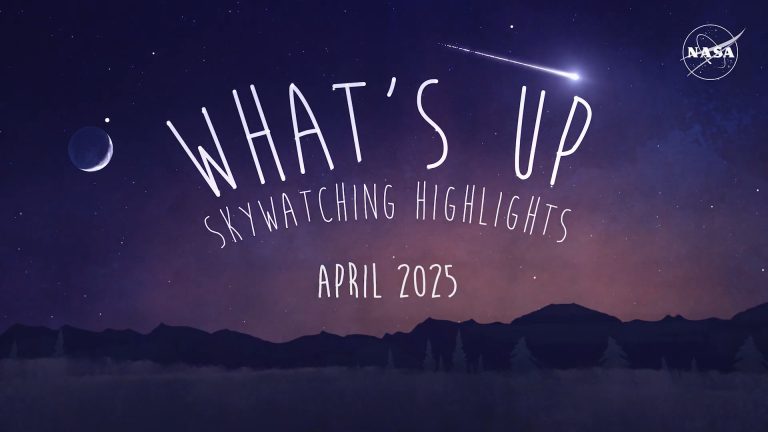2023年5月12日
Halley Dust, Mars Dust, and Milky Way
Image Credit & Copyright: Petr Horalek / Institute of Physics in Opava
Explanation: Grains of cosmic dust streaked through night skies in early May. Swept up as planet Earth plowed through the debris streams left behind by periodic Comet Halley, the annual meteor shower is known as the Eta Aquarids. This year, the Eta Aquarids peak was visually hampered by May’s bright Full Moon, though. But early morning hours surrounding last May’s shower of Halley dust were free of moonlight interference. In exposures recorded between April 28 and May 8 in 2022, this composited image shows nearly 90 Eta Aquarid meteors streaking from the shower’s radiant in Aquarius over San Pedro de Atacama, Chile. The central Milky Way arcs above in the southern hemisphere’s predawn skies. The faint band of light rising from the horizon is Zodiacal light, caused by dust scattering sunlight near our Solar System’s ecliptic plane. Along the ecliptic and entrained in the Zodiacal glow are the bright planets Venus, Jupiter, Mars, and Saturn. Of course Mars itself has recently been found to be a likely source of the dust along the ecliptic responsible for creating Zodiacal light.
Tomorrow’s picture: The Crescent Earth
哈雷彗星的尘埃、火星尘与银河
影像提供与版权: Petr Horalek / Institute of Physics in Opava
说明: 宇宙尘埃的微粒滑落了5月初的夜空。每年在那段期间,地球穿过周期彗星哈雷所留下的尘埃碎片流,带来年年复现的宝瓶座流星雨。不过在今年,宝瓶座流星雨极大期的观赏不幸受到了5月明亮满月的阻碍。然而在去年5月哈雷尘埃流星雨洒落的清晨时分,并无月光的干扰。是以这幅由摄于2022年4月28日至5月8日期间的照片组合而成的主题影像,就记录将近90颗宝瓶流星,从智利圣佩德罗-德阿塔卡马镇上空的宝瓶座辐射点飞掠而出。此外在影像里,可见到银河系的中央盘面高悬在南半球的清晨天空中。从地平线伸出的暗淡光带则是黄道光,源自太阳系黄道面附近的尘埃散射阳光所致。沿着黄道、沉浸在黄道光中的天体,有明亮的行星:金星、木星、火星及土星。科学家最近发现,火星可能是沿黄道面分布并造成黄道光的尘埃之来源。
明日的图片: The Crescent Earth







